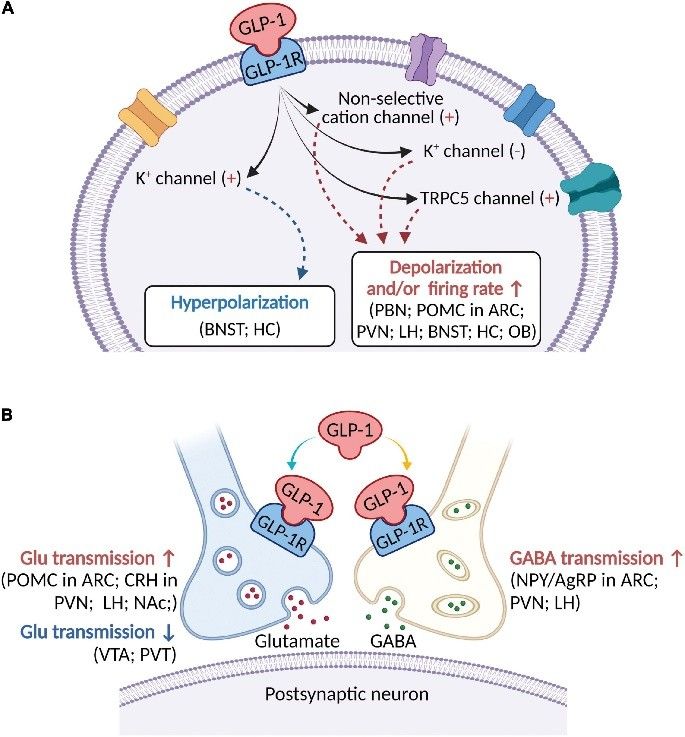Hi-Affi™ GLP1R Stable Cell Line
GPCRs are currently among the most extensively investigated drug targets in pharmaceutical industry (30-40% of actual drugs in the market). To accelerate and simplify drug discovery and development in this area, Creative Biolabs now offers a comprehensive portfolio of over 100 GPCR stable cell lines specifically engineered for function profiling of various GPCRs. Based on a unique biosensor technique, these cell lines can help to characterize compounds' in vitro function potential during early stage. Currently, we highly recommend the Hi-Affi™ GLP1R cell line to our customers around the world.
Introduction to GLP1R Receptor
The glucagon-like peptide 1 receptor (GLP1R) is a member of the glucagon receptor family of G protein-coupled receptors. It is composed of two domains, one transmembrane (TMD) domain that binds the N-terminal region of GLP-1 and the extracellular (ECD) that binds the C-terminal helix of GLP-1.
 Fig. 1 A schematic diagram describing the major electrophysiological effects of activating GLP-1R/GLP1R in brain areas involved in modulation of feeding behaviors.1, 2
Fig. 1 A schematic diagram describing the major electrophysiological effects of activating GLP-1R/GLP1R in brain areas involved in modulation of feeding behaviors.1, 2
GLP1R is shown to be expressed in pancreatic beta cells. Activated GLP1R stimulates the adenylyl cyclase which catalyzes ATP into cAMP. Increased cAMP then promotes insulin synthesis and release of insulin. Consequently, GLP1R has been a target for developing drugs usually referred to as GLP1R agonists to treat diabetes. GLP1R is also expressed in the brain where it is involved in the control of appetite.
Hi-Affi™ GLP1R Stable Cell Line
Hi-Affi™ GLP1R stable cell line is established by co-transfection of human glucagon-like peptide 1 receptor (GLP1R) and cAMP-activated, membrane-associated fluorescent biosensor in U2OS cells. Upon GLP1R activation/inhibition, changes in cAMP concentration will trigger immediate translocation of biosensor (from plasma membrane to cytosolic vesicles). This way, GLP1R activities will be real-time translated into cellular fluorescence signals, which can be easily monitored and quantified. The GLP1R cell line has been used to characterize AVPR2-modulating activities of various compound candidates, which is efficient, convenient, and flexible to multiple study formats.
Featured Advantages of Hi-Affi™ GLP1R Stable Cell Lines
- Time- and cost-saving
- Simple operations, with no special requirements for reagents or equipment
- Amendable to high-throughput screenings
- No modifications/labeling of GLP1R or downstream pathways, maximally preserving native signaling events
Besides GLP1R, Creative Biolabs now offers a full portfolio of Hi-Affi™ GPCR stable cell lines engineered with cAMP-activated biosensors, including but not limited to:
|
Aiming at providing most reliable and custom-oriented services to assist our customers’ projects. Creative Biolabs now launches a broad range of Hi-Affi™ GPCR stable cell lines to study calcium-, cAMP-, DAG-related as well as multiplex pathway events of various GPCRs. If you cannot find your desired target in our catalog, we are always ready to develop a specific strain to satisfy every request. Please contact us for more details.
References
- Chen, Xin-Yi, et al. "GLP-1 suppresses feeding behaviors and modulates neuronal electrophysiological properties in multiple brain regions." Frontiers in molecular neuroscience 14 (2021): 793004.
- under Open Access License CC BY 4.0, without modification.
For Research Use Only.
